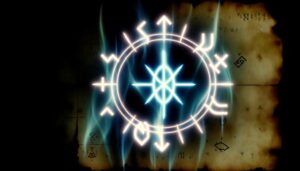What Is the Star of Bethlehem’s Symbolic Meaning?
The Star of Bethlehem, recounted in the Gospel of Matthew, symbolizes divine guidance and the fulfillment of Old Covenant prophecies. Theologically, it represents messianic enlightenment and hope, heralding the birth of Jesus Christ and the promise of salvation.
Historically, its emergence has been linked to various astronomical phenomena, such as planetary alignments and comets, reflecting ancient interpretations of divine omens. Culturally, it has evolved into a central symbol in art, literature, and religious traditions, celebrated especially during Christmas.
For a deeper exploration of its multifaceted significance across disciplines and eras, one can consider additional perspectives.

Key Takeaways
- Symbolizes divine guidance and the fulfillment of Messianic prophecies in Christian theology.
- Represents hope, spiritual enlightenment, and the promise of salvation.
- Historically interpreted as a significant astronomical event or divine omen.
- Depicted in art as a beacon connecting the heavens with the earthly realm.
- Celebrated in modern festive customs, emphasizing the connection between divine and human.
Biblical References
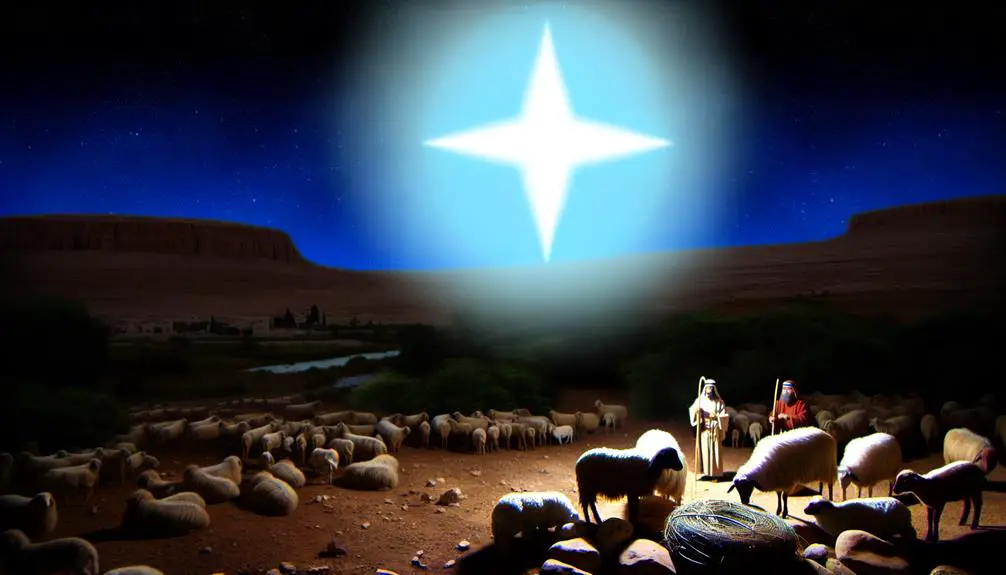
Frequently appearing within the sacred texts, the Star of Bethlehem is most prominently referenced in the Gospel of Matthew, where it guides the Magi to the birthplace of Jesus. This celestial sign is described in Matthew 2:1-12, as a phenomenon observed by wise men from the East, interpreted as heralding the birth of the 'King of the Jews.'
The star's role is pivotal, symbolizing divine guidance and fulfillment of prophecy. Importantly, it aligns with Old Covenant prophecies, such as Numbers 24:17, which speaks of a star coming out of Jacob. Theologically, the star signifies divine intervention and revelation, bridging the celestial and earthly domains.
Its scriptural presence underscores themes of messianic fulfillment and divine orchestration within the biblical narrative.
Historical Context
The historical context of the Star of Bethlehem encompasses a confluence of ancient astronomical events, scriptural narratives, and cultural interpretations that have intrigued scholars and theologians alike.
Significant celestial phenomena, such as planetary alignments or supernovae, have been proposed as possible explanations for this biblical symbol.
Additionally, various cultural perspectives have historically imbued the star with meanings that reflect the religious and societal values of different epochs.
Ancient Astronomical Events
Throughout history, significant astronomical events have often been interpreted as divine omens or celestial messages, deeply influencing cultural and religious narratives. Ancient civilizations meticulously recorded phenomena such as comets, planetary conjunctions, and eclipses, attributing profound significance to their occurrences.
For instance, the appearance of Halley's Comet was linked to momentous events ranging from the rise and fall of empires to the birth of influential leaders. The conjunction of Jupiter and Saturn, known as the Great Conjunction, was historically perceived as a harbinger of transformative epochs.
These astronomical occurrences were not merely scientific curiosities but were imbued with symbolic meanings, serving as pivotal elements in the construction of mythologies and the shaping of societal beliefs and expectations.
Biblical References
In examining the historical context of biblical references, the Star of Bethlehem is often interpreted as a celestial sign heralding the birth of Jesus Christ, as chronicled in the Gospel of Matthew. This star is a pivotal element in the nativity narrative, guiding the Magi from the East to the birthplace of Jesus.
The following scriptural elements are notable:
- Matthew 2:1-2: The Magi inquire about the newborn King of the Jews, having seen his star in the East.
- Matthew 2:9-10: The star reappears and leads the Magi to the precise location.
- Old Testament Prophecies: Some scholars connect the star to prophecies in Numbers 24:17.
- Divine Significance: Often viewed as a divine signal of the Messiah's arrival.
- Historical Debate: Scholars continue to explore the actual astronomical events that could explain the star.
Cultural Interpretations
Beyond its scriptural significance, the Star of Bethlehem has also been interpreted through various cultural lenses, reflecting diverse historical and societal contexts.
In medieval Europe, the star became a symbol of divine guidance and hope, often depicted in nativity scenes and religious art.
The Renaissance period saw it as a marker of celestial events, blending astronomical and theological perspectives.
In Eastern Orthodox traditions, the star represents the light of Christ illuminating the world, celebrated during Epiphany.
Meanwhile, Islamic scholars have explored its astronomical aspects, linking it to celestial phenomena.
These interpretations highlight how the Star of Bethlehem transcends its biblical origins, evolving into a multifaceted symbol that resonates with different cultures and epochs, illustrating a shared quest for meaning.
Astronomical Theories
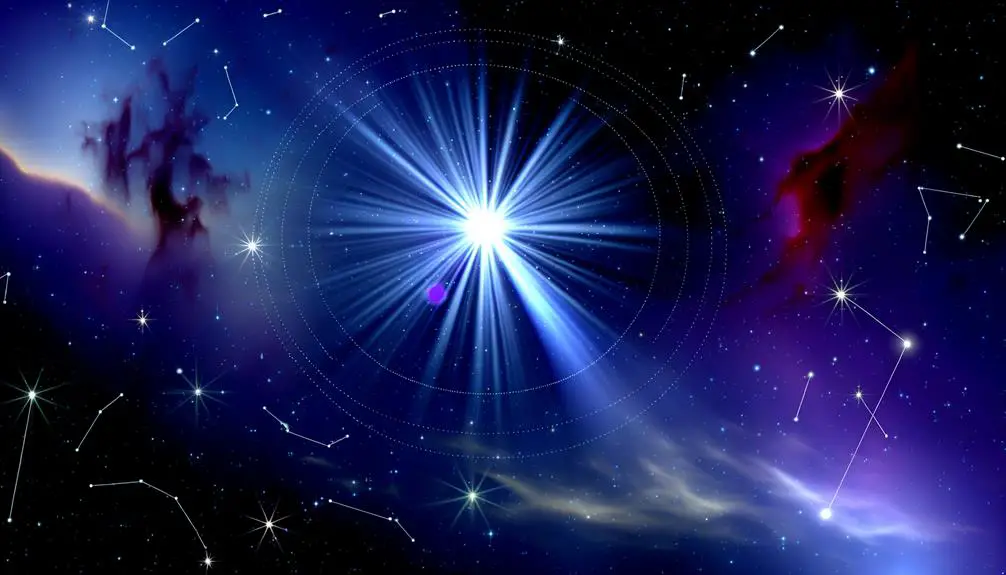
Several hypotheses have been proposed by scholars to explain the astronomical phenomenon known as the Star of Bethlehem. These theories seek to reconcile scriptural accounts with observable celestial events.
Among the most prominent are:
- Conjunction of Jupiter and Saturn: This rare alignment in 7 B.C. is suggested by some astronomers as the Star.
- Comet: Halley's Comet, visible around 12 B.C., is another candidate, offering a dramatic celestial display.
- Nova or Supernova: A sudden appearance of a new star could explain the biblical description of a bright light.
- Planetary Conjunctions: Multiple planetary alignments, particularly involving Venus and Jupiter, could create an exceptionally bright appearance.
- Astrological Significance: Some theories consider the symbolic meaning of specific star alignments significant to ancient astrologers.
These theories, while varied, contribute to our understanding of this enduring mystery.
Theological Interpretations
The theological interpretations of the Star of Bethlehem center on its role as a symbol of divine guidance, marking the fulfillment of messianic prophecy as foretold in scriptures such as Micah 5:2 and Numbers 24:17.
This celestial phenomenon is often seen as a manifestation of divine light and revelation, illuminating the path to the Christ child for the Magi.
Divine Guidance Symbolism
In theological discourse, the Star of Bethlehem is frequently interpreted as a symbol of divine guidance, shedding light on the path towards spiritual enlightenment and truth. This celestial phenomenon is seen as a beacon, directing believers towards a deeper understanding of the divine will and purpose.
Theological interpretations emphasize its role in guiding the Magi, illustrating the following aspects of divine guidance:
- Illumination: Represents the light of divine wisdom piercing through human ignorance.
- Direction: Serves as a navigational aid towards spiritual and moral destinations.
- Disclosure: Symbolizes the revealing of divine mysteries to humanity.
- Providence: Reflects God's active involvement in human affairs, ensuring His will is accomplished.
- Hope: Embodies the promise of salvation and the fulfillment of divine promises.
Messianic Prophecy Fulfillment
Building upon the theme of divine guidance, the Star of Bethlehem is also profoundly significant in theological interpretations as a symbol of the fulfillment of Messianic prophecy. The Gospel of Matthew (2:1-12) recounts the star leading the Magi to Jesus, fulfilling Old Scripture prophecies such as Numbers 24:17, which foretells, 'A star shall come out of Jacob, and a scepter shall rise out of Israel.'
This celestial sign is seen as a divine marker, heralding the arrival of the long-awaited Messiah. Theologically, the star not only signifies Christ's birth but also the culmination of prophetic anticipation, affirming Jesus as the prophesied Savior. Therefore, the Star of Bethlehem embodies the realization of ancient promises within Christian eschatology.
Light and Revelation
Illumination serves as a central motif in theological interpretations of the Star of Bethlehem, symbolizing divine revelation and the enlightening presence of Christ. This celestial phenomenon is often viewed as a manifestation of God's guidance, leading the Magi to the birthplace of Jesus.
Scriptural analysis highlights the profound spiritual significance of light in the context of divine revelation.
- Direction: The star directed the Magi, symbolizing God's guidance to those who seek truth.
- Christ's Radiance: It represents the radiance of Christ breaking into a darkened world.
- Prophetic Fulfillment: The star fulfills Old Covenant prophecies regarding the Messiah.
- Divine Presence: It signifies God's immediate presence in the world.
- Spiritual Awakening: The star prompts a spiritual awakening and recognition of Christ's divinity.
Such interpretations enrich our understanding of the Nativity narrative.
Artistic Representations
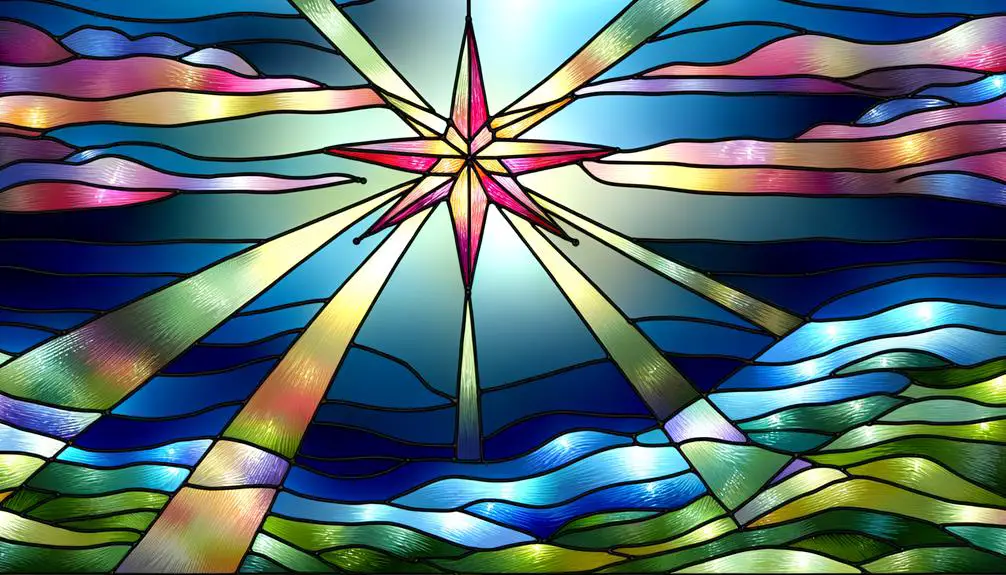
How have artists throughout history captured the profound essence of the Star of Bethlehem in their works? Artists, from medieval illuminators to Renaissance painters, have employed diverse techniques to symbolize its celestial significance. Illuminated manuscripts often depict the star in gold leaf, signifying divine light. Renaissance artists like Giotto and Botticelli rendered it as a radiant, guiding force in Nativity scenes, emphasizing its role in divine revelation. Baroque art, with its dramatic use of light and shadow, further accentuated the star's spiritual symbolism.
| Artistic Period | Representation of Star of Bethlehem |
|---|---|
| Medieval | Gold leaf in illuminated manuscripts |
| Renaissance | Radiant star in Nativity scenes |
| Baroque | Dramatic light and shadow effects |
| Modern | Abstract interpretations and symbolism |
Such representations underscore the star's enduring theological and artistic significance.
Cultural Impact
Throughout history, the artistic representations of the Star of Bethlehem have not only enriched theological discourse but have also profoundly influenced cultural narratives and practices. The symbol has permeated various aspects of cultural expression, shaping traditions and societal norms. Its depiction in art and literature serves as a beacon of divine guidance and hope, resonating across different epochs and communities.
The cultural impact can be observed in:
- Festive customs and rituals during Christmas celebrations.
- Literary works that incorporate its symbolism to convey spiritual themes.
- Architectural designs inspired by its star-like form.
- Medieval and Renaissance artworks that emphasize its theological significance.
- Global folklore and storytelling traditions that reference its miraculous appearance.
Thus, the Star of Bethlehem remains a potent cultural emblem.
Modern-Day Symbolism
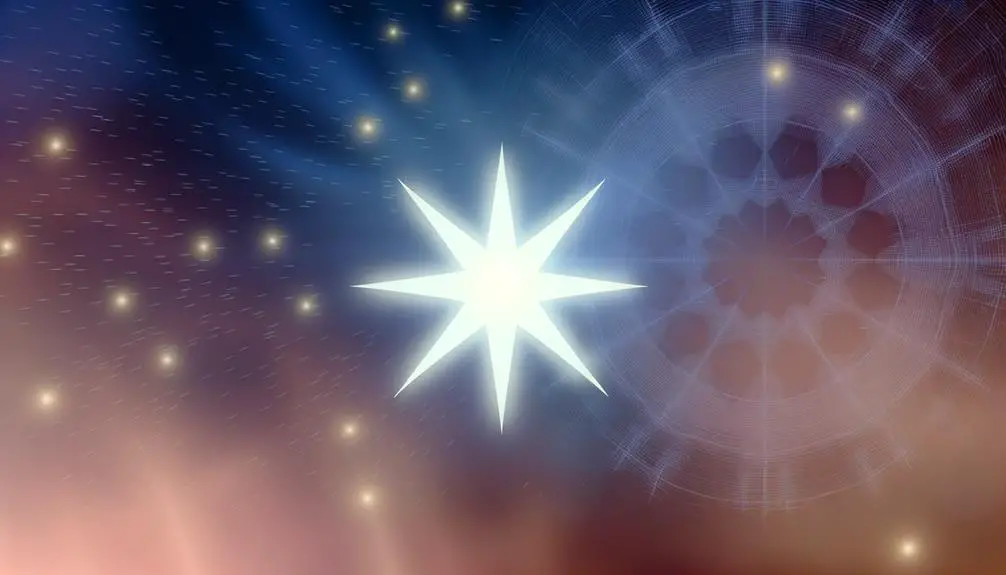
In contemporary contexts, the Star of Bethlehem continues to embody a multifaceted symbol of spiritual enlightenment and divine intervention. Theologically, it represents a beacon guiding the faithful towards the divine, reminiscent of its biblical role leading the Magi to the Christ child.
Symbolically, it stands as a tribute to the manifest presence of the divine in the mundane, offering a tangible connection between the heavens and earth. Its use in modern religious iconography underscores its enduring significance, transcending mere historical narrative to inspire hope and faith in contemporary believers.
This celestial emblem remains a potent reminder of divine providence and the promise of spiritual guidance, resonating deeply within the modern spiritual and religious psyche.
Scientific Investigations
While the Star of Bethlehem holds profound spiritual significance, its origins have also sparked extensive scientific investigations aimed at uncovering the astronomical phenomena that could explain this celestial event. Scholars and astronomers have proposed several hypotheses, each seeking to align historical records with celestial occurrences.
- Conjunction of Planets: Some researchers suggest the Star was a rare conjunction of Jupiter and Saturn, creating an unusually bright point in the sky.
- Supernova: Another theory posits that a supernova explosion could have been recorded as the Star of Bethlehem.
- Comet: Comets, with their pronounced tails and brilliance, are also considered possible explanations.
- Astronomical Alignment: Alignments of stars and planets might have created a unique celestial event visible to ancient observers.
- Astrological Interpretation: Some argue that the Star's significance was more astrological, heralding the birth of a king.
Conclusion
To sum up, the Star of Bethlehem serves as a multifaceted symbol, embodying a confluence of biblical narrative, historical significance, and astronomical inquiry.
Theological interpretations and artistic representations have further enriched its cultural impact, allowing the symbol to transcend time and place.
Modern-day symbolism and scientific investigations continue to shed light on this enigmatic phenomenon, illustrating that, in the quest for understanding, the Star of Bethlehem remains a guiding light, illuminating both faith and reason.




